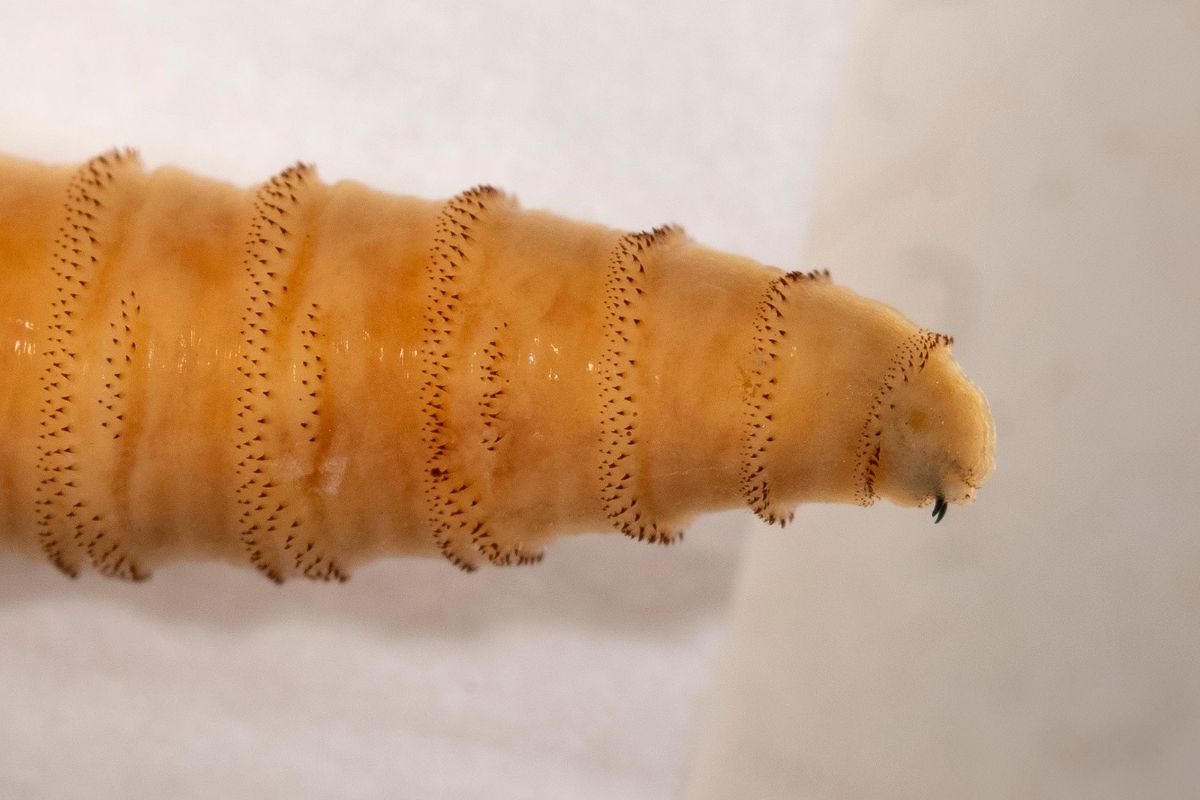
Screwworms might sound like something from a horror movie, but they are real and quite fascinating. These parasitic flies lay their eggs in open wounds of warm-blooded animals, including humans. Once hatched, the larvae burrow into the flesh, causing severe damage. Screwworm infestations can lead to significant economic losses in livestock industries due to the harm they cause to animals. However, there's good news! Scientists have developed innovative methods to control and eradicate these pests, such as the Sterile Insect Technique (SIT). This method involves releasing sterilized male screwworms into the wild to reduce the population. Want to learn more intriguing facts about these pesky parasites? Keep reading!
What Are Screwworms?
Screwworms are parasitic flies that cause significant damage to livestock and wildlife. These pests are known for their destructive feeding habits, which can lead to severe health issues in animals. Let's dive into some fascinating and alarming facts about screwworms.
-
Screwworms are larvae of the New World screwworm fly (Cochliomyia hominivorax). These flies lay their eggs in open wounds of warm-blooded animals, where the larvae then hatch and feed on living tissue.
-
Screwworms can infest any warm-blooded animal. This includes livestock like cattle and sheep, as well as pets and even humans.
-
Female screwworm flies lay up to 400 eggs at a time. These eggs are usually deposited in a single layer on the edges of wounds or mucous membranes.
-
The larvae burrow into the flesh, causing severe tissue damage. This can lead to secondary infections and, if untreated, can be fatal to the host animal.
-
Screwworm infestations can cause significant economic losses. In the livestock industry, these pests can lead to decreased productivity, increased veterinary costs, and even death of animals.
The Lifecycle of Screwworms
Understanding the lifecycle of screwworms is crucial for controlling their spread. Here are some key points about their development stages.
-
Eggs hatch within 12 to 24 hours. The larvae immediately begin feeding on the host's tissue.
-
Larvae go through three stages of development. Each stage, or instar, involves the larvae growing larger and causing more damage to the host.
-
The larvae drop to the ground to pupate. After feeding for 5 to 7 days, the larvae leave the host and burrow into the soil to transform into pupae.
-
Pupation lasts about 7 to 10 days. During this time, the larvae develop into adult flies.
-
Adult screwworm flies emerge ready to mate. The entire lifecycle from egg to adult can be completed in as little as 20 days under optimal conditions.
Historical and Geographical Impact
Screwworms have had a significant impact on various regions and their histories. Here are some notable facts.
-
Screwworms were eradicated from the United States in the 1960s. A successful sterile insect technique (SIT) program helped eliminate these pests from the country.
-
The sterile insect technique involves releasing sterilized male flies. These males mate with wild females, resulting in no offspring and a gradual decline in the screwworm population.
-
Screwworms are still a problem in parts of Central and South America. Efforts are ongoing to control and eradicate these pests in affected regions.
-
Outbreaks can occur when screwworms are accidentally reintroduced. For example, a 2016 outbreak in the Florida Keys was traced back to animals imported from South America.
-
Screwworm infestations can impact wildlife populations. Deer, for example, are particularly vulnerable to these parasites, which can lead to significant declines in their numbers.
Control and Prevention
Controlling and preventing screwworm infestations requires a combination of strategies. Here are some effective methods.
-
Regular inspection of livestock is crucial. Early detection of wounds and prompt treatment can prevent screwworm infestations from taking hold.
-
Proper wound care is essential. Keeping wounds clean and covered can deter female flies from laying eggs.
-
Chemical treatments can be used to kill larvae. Insecticides and larvicides can be applied to wounds to eliminate screwworm larvae.
-
Biological control methods are being explored. Researchers are investigating natural predators and parasites that could help control screwworm populations.
-
Public awareness and education are key. Farmers, veterinarians, and pet owners need to be informed about the risks of screwworms and the best practices for preventing infestations.
The Final Word on Screwworms
Screwworms are more than just pests; they’re a serious threat to livestock and wildlife. These parasitic flies lay eggs in open wounds, and their larvae feed on living tissue. This can lead to severe infections and even death if not treated. Eradication programs have been successful in many regions, but vigilance is key to preventing their return. Understanding their life cycle and impact helps in managing and controlling outbreaks. Remember, early detection and prompt treatment are crucial. By staying informed and proactive, we can protect animals from these harmful parasites. Keep an eye out for any signs of infestation and report them immediately to local authorities. Knowledge is power, and in this case, it’s also a lifesaver. Stay alert, stay informed, and keep your animals safe from screwworms.
Was this page helpful?
Our commitment to delivering trustworthy and engaging content is at the heart of what we do. Each fact on our site is contributed by real users like you, bringing a wealth of diverse insights and information. To ensure the highest standards of accuracy and reliability, our dedicated editors meticulously review each submission. This process guarantees that the facts we share are not only fascinating but also credible. Trust in our commitment to quality and authenticity as you explore and learn with us.
